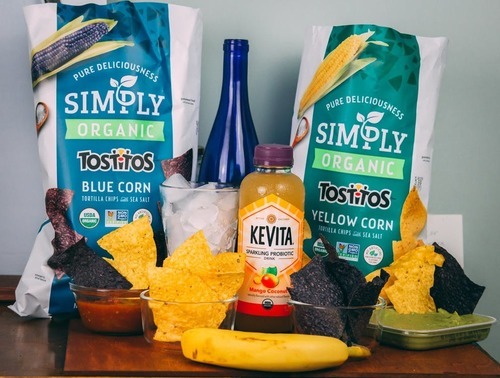
The Cultural History of Street Food: From Ancient Rome to Modern Food Trucks
Street food is so much more than just a quick bite on the go. It’s a vibrant, living tapestry woven from threads of history, culture, community, and culinary innovation. From the bustling alleys of ancient cities to the trendy food trucks lining our modern streets, the story of street food is the story of us – how we live, how we eat, and how we connect with each other through the universal language of flavor. It’s a journey that spans continents and centuries, offering delicious insights into the heart of societies worldwide.
Ancient appetites and medieval markets: The early days
The concept of grabbing a ready-made meal outside the home is far from new. Its roots stretch deep into antiquity, driven by the very nature of urban life. In Ancient Rome, many city dwellers lived in multi-story apartment buildings (insulae) that often lacked private kitchens. This necessity gave rise to ‘thermopolia’, essentially countertop services opening onto the street, which served hot food and drinks. These ancient snack bars provided essential sustenance for the populace, showcasing an early understanding of convenient, accessible food solutions in dense urban environments. Similarly, historical records point to street vendors being a common sight in medieval Islamic cities, offering everything from sweet pastries to savory dishes, catering to diverse tastes and social strata. You can delve deeper into the cultural significance of street food across different historical periods and regions.
Moving into medieval Europe, street vendors became even more crucial, particularly for the urban poor who lacked cooking facilities. Hawkers selling pies, bread, cooked meats, and other staples were fixtures of town and city life. They weren’t just feeding people; they were an integral part of the daily economy and social fabric. Further east, during Japan’s Edo period (1603-1868), a sophisticated street food culture emerged. Vendors began selling early forms of sushi, designed to be eaten quickly by busy city dwellers. This wasn’t just fast food; it reflected culinary advancements and the burgeoning pace of urban life, demonstrating how street food consistently adapts to societal needs and innovations.
Global flavors on the move: Trade, migration, and culinary fusion
The great waves of global trade and migration dramatically reshaped the world’s culinary landscape, and street food was often at the forefront of this delicious exchange. The Columbian Exchange, for instance, introduced ingredients like chili peppers to Asia and potatoes to Europe. These newcomers were readily adopted and integrated into local cuisines, eventually becoming cornerstones of iconic street foods – think of the spicy kick in an Indian samosa or the comforting satisfaction of Belgian fries. These dishes, now deeply embedded in their respective cultures, are testaments to how street food absorbs and transforms global influences.
Migration, in particular, has played a pivotal role. As people moved across the globe, they carried their culinary heritage with them. Setting up food stalls or carts often provided a vital economic foothold in a new land, while also serving as a way to preserve cultural identity and connect with others from their homeland. Over time, these immigrant dishes often weave themselves into the fabric of their new cities, enriching the local street food scene immeasurably. Consider the incredible fusion dishes found in many modern cities, like the Korean-Mexican tacos popularised by food trucks, which beautifully symbolize this blending of cultures.
This cultural blending and preservation is evident worldwide. In Italy, particularly Naples, street food has a rich history rooted in providing affordable, satisfying food like ‘pizza fritta’ (fried pizza). This tradition evolves, as seen in places like Vafamoc in Paris, which brings the Neapolitan specialty ‘panzerotto’ – a delicious fried turnover, often filled with tomato and mozzarella – to a new audience, showcasing how traditional recipes can find new life.
Similarly, the streets of Athens offer a taste of Greek history and culture. Enjoying a classic Gyros wrapped in pita with tzatziki, or savoring traditional dishes like Moussaka or Spanakopita (spinach and feta pie) from a street vendor, connects you directly to generations of culinary tradition. Even sweet treats like Baklava are part of this vibrant scene. As highlighted in explorations of Athens’ unforgettable street food, these foods are more than just sustenance; they are cultural artifacts, often prepared by families who have passed down recipes for generations, acting as a delicious bridge to understanding Greek heritage.
In Asia, cities like Taipei boast an incredible street food culture that is deeply intertwined with the city’s history and identity. From savory oyster vermicelli and iconic Taiwanese fried chicken to refreshing bubble tea, the night markets and street stalls are essential experiences. Engaging with this scene, perhaps through a Taipei foodie and historical walking tour, reveals how the food reflects Taiwan’s past influences and modern creativity. Likewise, Seoul’s dynamic street food, featuring traditional dishes like Japchae (glass noodles) alongside modern favorites like Korean fried chicken, demonstrates a vibrant blend of history and contemporary taste, playing a significant cultural and economic role as explored by resources like Korea.net.
The rise of the modern food truck and the gourmet evolution
While traditional carts and stalls remain vital, the 21st century has witnessed the dramatic rise of the modern food truck. These mobile kitchens, often equipped with sophisticated cooking facilities, represent a contemporary evolution of street vending. Particularly prominent in North American and European cities, food trucks have added a dynamic, often trendy, layer to the urban food landscape. They gather at designated spots, frequent festivals, and utilize social media to connect with customers, becoming culinary destinations in their own right.
Alongside the food truck phenomenon, there’s been a fascinating shift in perception – the evolution of street food from humble, cheap eats to a celebrated part of the gourmet scene. This ‘gourmetization’ has been fueled by passionate chefs seeing the potential for creativity and quality within the accessible format of street food, as well as by a global ‘foodie’ culture hungry for authentic, unique, and high-quality experiences. As detailed in discussions about the evolution from cart to gourmet, food trucks and pop-ups began championing artisanal ingredients, experimental flavor combinations, and meticulous preparation, attracting a discerning clientele.
Take the humble sandwich, a street food staple. Its evolution perfectly illustrates this trend. Once primarily about convenience and portability with basic fillings, gourmet sandwiches now feature high-quality, locally sourced meats, artisan cheeses, organic produce, and house-made condiments like aioli. Culinary techniques usually reserved for high-end restaurants, such as sous-vide cooking for meats, are employed to maximize flavor and texture. Fusion concepts abound, blending global influences to create exciting new profiles. Presentation has also become key, with custom packaging and thoughtful pairings enhancing the overall experience, transforming a simple meal into a culinary event.
This gourmet street food movement also carries significant economic implications. Food trucks and specialized market stalls offer a lower barrier to entry for aspiring chefs and culinary entrepreneurs compared to traditional brick-and-mortar restaurants. This fosters innovation and diversity in the food scene. Furthermore, many of these businesses prioritize sourcing ingredients from local farms and suppliers, strengthening local food economies and promoting sustainability – a win-win for producers, vendors, and consumers alike.
More than just a meal: Cultural identity and social space
Ultimately, street food’s enduring power lies in its role as a cultural mirror. It reflects a community’s history, its agricultural bounty, its social structures, and its core values. Traditional recipes and cooking methods, often passed down through generations, are kept alive and vibrant in the hands of street vendors. Think of the complex, slow-simmered broth of Vietnamese Pho – its preparation speaks volumes about the cultural emphasis on balance, patience, and depth of flavor in Vietnamese cuisine. Eating street food is often the most direct and delicious way to connect with the authentic culinary heritage of a place.
Beyond the food itself, the spaces where street food is sold are vital social hubs. Night markets, public squares filled with food stalls, and clusters of food trucks become lively gathering places. They foster interaction, bringing people from all walks of life together. In this sense, street food acts as a great equalizer and a facilitator of community. It transcends language barriers, offering a shared experience centered around the simple pleasure of eating well. It truly can be a ‘universal linguistic bridge’, fostering connection through shared taste.
Of course, globalization presents both opportunities and challenges. On one hand, it has spread diverse international cuisines far and wide, enriching local street food scenes and promoting exciting cultural exchanges. On the other hand, the proliferation of global fast-food chains and the homogenization of tastes can pose a threat to the survival of unique, traditional street foods. Yet, there’s also a powerful counter-current: a growing global appreciation for authenticity. Food lovers and travelers actively seek out genuine street food experiences, recognizing their value and supporting the vendors who are the guardians of these precious culinary traditions.
The enduring appetite: Why street food continues to captivate us
From the simple thermopolia of Ancient Rome to the sophisticated gourmet food trucks of today, street food has proven remarkably resilient and adaptable. It has consistently evolved to meet the changing needs and tastes of societies while retaining its core appeal: accessibility, affordability, and authenticity. It’s food that meets us where we are, offering comfort, excitement, and a direct connection to culture and place.
Street food is history served hot. It’s culture you can taste. It’s community fostered over shared tables and countertops. Whether it’s a generations-old family recipe or a cutting-edge fusion creation, street food tells a story. It reminds us that food is not just fuel, but a fundamental part of our human experience, a vibrant, ever-evolving expression of who we are and where we come from. And that, I believe, is why our appetite for it remains absolutely insatiable.





